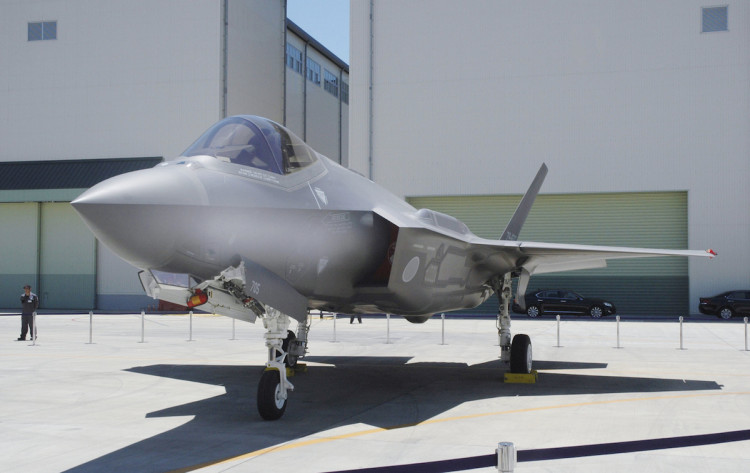Japan now has the most powerful air force in Asia.
The green light given by the United States on July 9 for Japan to purchase 105 Lockheed Martin F-35 Joint Strike Fighter stealth jets for $23 billion gives the Japan Air Self-Defense Force (JASDF) an air weapon that can negate the numerical advantage enjoyed by the People's Liberation Army Air Force (PLAAF), which operates some 800 fighter aircraft.
Of this massive PLAAF inventory, only 50 are Chengdu J-20 single-seat, twinjet stealth jets, China's equivalent of the F-35. The J-20, however, is inferior to the F-35 in air-to-air combat because of its less than stealthy profile. Because of this lethal disadvantage, the J-20 has been earmarked for long-range attacks against U.S. Navy warships.
In total, the PLAAF operates some 700 other conventional third- and fourth-generation air superiority fighters such as the Shenyang J-11, the Shenyang J-16, the Sukhoi Su-30 and the Sukhoi Su-35.
Washington said Japan has bought 63 F-35A, the conventional takeoff and landing aircraft and 42 F-35B short takeoff and landing variants capable of landing on aircraft carriers such as those of the Japan Maritime Self-Defense Force (JMSDF).
In addition to the stealth jets, Japan also bought 110 Pratt & Whitney F135 engines, electronic warfare and communications systems, the Autonomic Logistics Information System, training gear, performance-based logistics package, software integration and spare parts, among others.
With the acquisition, Japan becomes the largest operator of F-35s in Asia and the second-largest operator of the F-35 in the world after the United States Air Force. Other Asian militaries operating the F-35 are the Royal Australian Air Force (72 stealth jets operational or on order) and the Singapore Air Force (12 jets).
"It is vital to U.S. national interest to assist Japan in developing and maintaining a strong and effective self-defense capability," said a statement from the U.S. Department of State.
The F-35As will replace the JASDF's four decade-old fleet of 70 F-4EJ Kai fighter bombers (famous as the Phantom in U.S. service). The F-4EJ is an upgraded version with improved avionics and the ability to attack both ground targets and enemy warships.
The acquisition of the F-35s is a key part of Japan's plan to re-arm the JASDF with more modern weapons and equipment in the face of Chinese expansionism in Asia. Pilots of the JASDF will flew the F-35A for the first time in December 2016.
A Chinese military analysis published in January 2017 said the F-35 will transform the doctrine guiding the Japan Self-Defense Force (JSDF) to one based on the "dynamic deterrence" of China. JSDF's current doctrine has evolved over time from "basic defense" to "joint and mobile defense" to "homeland defense" and now to "dynamic deterrence."






